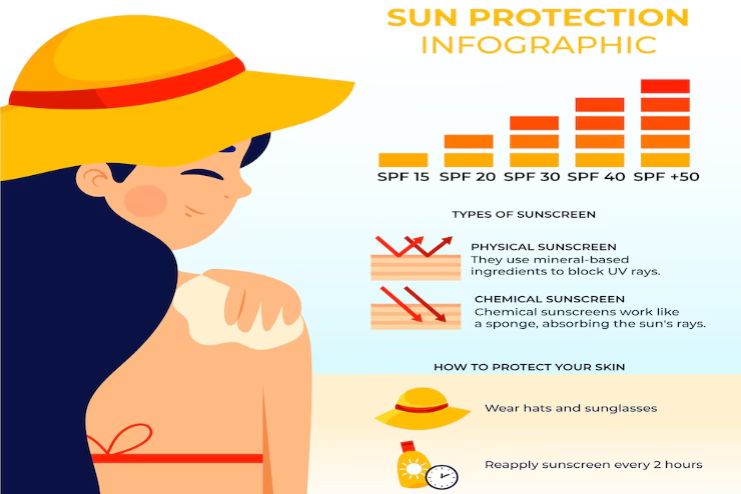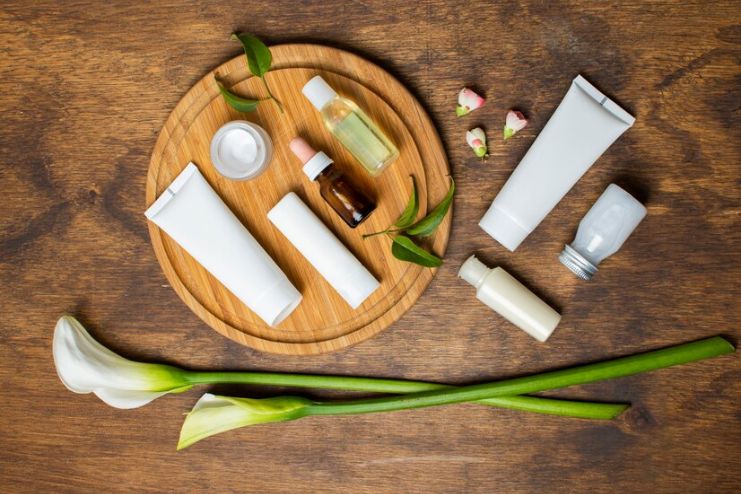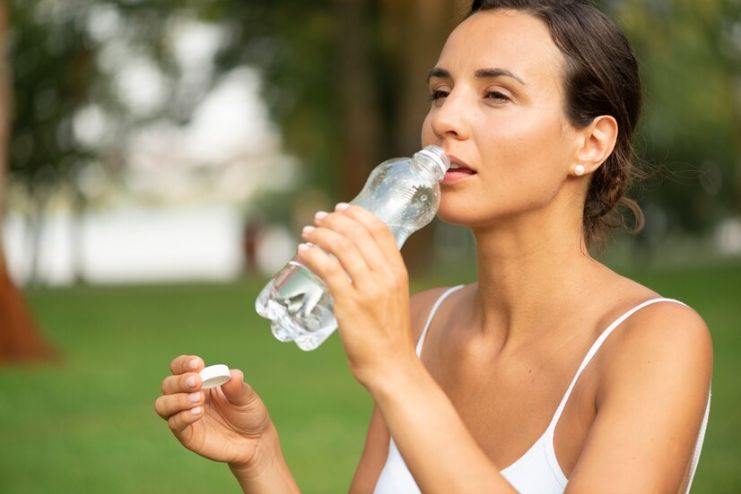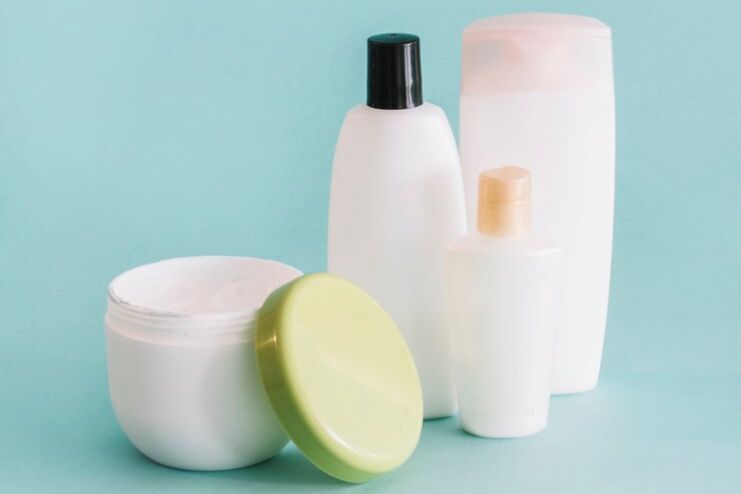Affiliate Disclaimer
Some links in this article are affiliate links. We may earn a small commission if you make a purchase through these links, at no extra cost to you. We only recommend products we find useful to our readersClimate change doesn’t just affect our planet. It affects our skin too. As global temperatures rise, weather patterns change. This causes changes in humidity and UV exposure, which take a toll on the skin. These changes can cause outbreaks of dryness, irritation, and premature aging. Understanding the link between climate change and skin health is important to protect your skin from damage. In this article, we’ll understand how climate change affects your skin and provide essential environmental skincare tips to keep your skin healthy despite these challenges.
How Climate Change Harms the Skin

Climate change can harm your skin in several ways. Rising temperatures and increased pollution can weaken your skin’s natural barrier, leading to dryness, irritation, and premature aging.
More UV exposure means a higher risk of sun damage, such as wrinkles, dark spots, and even skin cancer. Heat waves worsen conditions like eczema and rosacea, causing flare-ups and discomfort.
Pollution, especially from traffic and wildfires, plays a significant role in skin damage. Airborne particles break down the skin’s protective layer, making it more vulnerable to environmental harm. This leads to oxidative stress, which speeds up skin aging by damaging collagen and elastin. These elements are essential for keeping the skin firm and youthful.
Children, the elderly, and those exposed to high levels of pollution are particularly at risk. But climate change affects everyone’s skin. To protect your skin, it’s essential to take proactive steps. Sunscreen is vital but not enough. Use protective clothing, stay hydrated, and cleanse your skin thoroughly to remove pollutants. Additionally, consider using products with antioxidants to combat free radical damage. Proper skincare, along with reducing exposure to harmful environmental factors, can help keep your skin healthy in a changing climate.
Also, read: Top 5 Kojic Acid Serums: Brighten and Even Your Skin Tone
Specific Skin Concerns Due to Environmental Changes

Environmental changes in the past years have significantly impacted human skin. This is due to climate change and an increase in the level of pollutants, especially UV rays and wildfire smoke, which affects the maintenance of skin.
With the increasing temperatures and smoke from fossil fuels and wildfires starting, the risks of skin damage or developing premature aging, sunspots, and skin cancer are increasing.
UV Damage and Heat Exposure
Exposure to UV radiation is already well-known to cause skin damage in the form of premature aging, wrinkles, and dark spots. Children and elderly people with fragile skin are more susceptible to these changes.
Patients with rosacea and melasma will probably find worsening effects of these changes. According to dermatologists, enhanced protection against UV radiation may only decrease the risk of skin cancer and environmental damage.
Also, read: Sun Safety Tips: Protecting Skin Health to Prevent Cancer
Pollution and Skin Health
Air pollution, especially caused by traffic in highly populous urban areas, is a major threat. These pollutants, such as particulate matter and nitrogen oxides, degrade the protective stratum corneum, accelerate aging, and cause oxidative stress.
Wildfire smoke is also added to the list. Ecological dermatologists have observed increases in the incidence of eczema after episodes of acute pollution, such as when Canadian wildfires filled the air in 2023. This aggravates the conditions that are caused by pollution and causes long-term architectural and health-related damage to the skin.
Protective Measures
Combating these environmental stressors would require a multi-layered approach to skincare as advised by dermatologists. Such an approach would entail using broad-spectrum mineral sunscreens, wearing protective clothing, and meticulous cleansing to remove pollutants. In addition, hydration, with an antioxidant-rich diet, will strengthen the defense mechanisms of the skin.
Skincare Solutions to Combat Climate Change Effects

Your skin is constantly exposed to UV radiation and pollution. Here is how you can protect your skin against climate change by developing pollution-defense skincare and antioxidant-rich routines.
1. Always Use Sunscreen
One of the most potent defenses against UV rays is sunscreen. Make sure to use a high SPF of 30 or more and apply it not only when the sun appears, but even on cloudy days or even if you don’t plan to be outside for long.
Applied every day, sunscreen may protect your skin from ultraviolet radiation. Chemical sunscreens, which have been proven to harm coral reefs, should now be replaced with reef-safe sunscreen.
2. Avoid Peak Sun Hours
Minimize exposure to the sun by staying away from direct sunlight when the sun is the strongest, which is between 10 am and 4 pm. When you are outdoors, reapply every 60–90 minutes for effective protection.
3. Check Air Quality
Yet another challenge climate change poses is air pollution. Before stepping out of the house, check how clean the air is using apps such as the U.S. EPA’s AirNow. Free radicals are caused by pollution, which can cause damage to the skin, hence the need to be protected. Installing an air filtration system at home helps defend your skin against indoor pollutants.
4. Stay Hydrated

Keeping your skin hydrated will help maintain elasticity, therefore combating the effects of climate change. Utilize a reusable water bottle to stay eco-friendly while keeping your skin supple and healthy.
5. Choose Antioxidant-Rich Foods
Nutrition plays a crucial role in the skin’s health. In 2019, there was a study that highlighted the importance of vitamins E and C in resisting UV radiation. Vitamins are found in carrots, green leafy vegetables, blueberries, and watermelon, all rich in antioxidants that kill free radicals and prevent oxidative damage.
6. Take Vitamins and Supplements
Vitamins E and C combined enhance their benefits and are more beneficial than when taken alone. These vitamins together with probiotics have been observed to suppress inflammation and maintain the skin’s immune system after exposure to UV rays. The ingestion of selenium from dietary supplements helps in the prevention of premature aging caused by oxidative stress.
7. Use Topical Antioxidants
Free radicals damage the skin due to pollution, but topical antioxidants, such as vitamins C and E, can neutralize the skin from their harmful effects. This combination of vitamins synergistically reduces photoaging due to UV light, inflammation of the skin, and degradation of collagen, which further offers an added protective action against pollutant-induced changes in the skin.
Also, read: Beauty Sleep Hacks: 10 Tips for Glowing Skin and Restful Nights
8. Wear Protective Clothing and Hats

Other than sunscreen, protective clothing is another efficient means of defending your skin against UV rays. Up your own UPF clothing that can give you greater protection. Wide-brimmed hats with tightly knitted fabric can also minimize your exposure to sunlight.
9. Choose Sustainable Packaging
One of the major environmental concerns in the beauty industry is impossibly high, non-recyclable packaging. Try to use products that include minimal or biodegradable packaging. Always look for brands that recycle the material used or come with a refill. By cutting out waste plastic, you’re helping the planet.
10. Look for Natural Ingredients and Support Cruelty-Free and Vegan Brands
True sustainable skincare uses ingredients that are friendly to skin and the planet. They use natural, organic, and responsibly sourced ingredients. Shun those harmful chemicals that not only harm your skin but also can destroy the environment when washed into waterways.
Advocate for your skincare brand to be eco-friendly and transparent. Many eco-friendly skincare brands go beyond clean ingredients, such as sustainable sourcing, fair-trade practices, carbon-neutral shipping, and more. So if the brand receives B-corporation certification, you can go for it as it’s taking sustainability pretty seriously in every aspect of the business.
Also, read: Seasonal Skincare Tips: How to Keep Your Skin Radiant Year-Round
11. Opt for Multi-Use Products

Multi-use products can simplify your skincare routine and minimize waste and consumption. Aim to find products that serve more than one purpose, like a moisturizer with SPF or a tinted serum that hydrates. Beyond cutting down on the number of products you have to buy, it saves packaging too.
12. Conserve Water
Water conservation is a part of sustainable beauty. Consider products that require little or no water when it comes to application or rinsing, such as waterless cleansers, solid bars, or oil-based treatments. Simplify your skincare routine in the shower or sink and save a lot of water in the long run.
13. Recycle or Upcycle Your Beauty Containers
Many skincare products have their packaging in recyclable material. The trick is knowing how to recycle the product in the best way possible. Empty containers of leftover products should be placed in recycling bins. Some brands will even offer recycling programs in case you can send back used packaging for them to dispose of or reuse.
14. Use Eco-Friendly Tools

Skincare tools such as cotton pads and wipes, accumulate in the landfill. Instead, opt for reusable tools like organic cotton pads, bamboo cloth, or silicone cleansing brushes.
15. DIY Skincare
Homemade products can be eco-friendly and economical. DIY skincare means you can control what goes into the products. This means that your skin absorbs natural, chemical-free formulas. Homemade masks, moisturizers, and exfoliants, especially using aloe vera, coconut oil, and honey reduce the need to buy store-bought products.
16. Shop Locally
Using local skincare brands helps reduce transportation and packaging emission that contributes to the carbon footprint. Using regional ingredients reduces carbon imprint because it has less impact on the environment. In addition, it supports small-scale, eco-friendly businesses that thrive in your local community.
Conclusion
Using eco-friendly skincare practices has significant impacts on personal health and the planet’s overall wellness. Climate change and pollution affect your skin negatively. Using sustainable products, natural ingredients, and brands that are cruelty-free are among the most essential steps you can take to minimize your environmental impact. You can protect your skin from damaging UV radiation and pollutants by using antioxidant-rich products.
In this Article



















